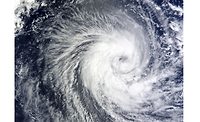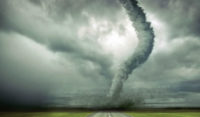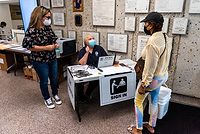Social networks such as Twitter may be used for monitoring, assessing and even predicting damage caused by natural disasters in just a few hours.
A new study published in the journal Science Advances, analyzed Twitter activity before, during and after Hurricane Sandy which, in 2012, caused more damage than any other storm in U.S. history, with an economic impact in the region of $50 million.
The researchers were from from National Information Communications Technology Australia and the University of California in San Diego.
"Twitter, the social network which we have analyzed, is useful for the management, real-time monitoring and even prediction of the economic impact that disasters like Hurricane Sandy can have," said researcher Esteban Moro Egido.
"Given that citizens were turning to these platforms for communication and information related to the disaster, we established a strong correlation between the route of the hurricane and activity on social networks," said Moro.
Researchers found a correlation between the mean per capita of social network activity and economic damage per capita caused by the disasters in the areas where such activity occurs. Both real and perceived threats, along with the economic effects of physical disasters, are directly observable through the strength and composition of the flow of messages from Twitter, the study said.
Researchers verified the results obtained from Hurricane Sandy and were able to demonstrate that the same dynamic also occurs in the case of floods, storms and tornadoes; for example, whenever there is sufficient activity on social media to extract such data.
In this way, the study said, communication on Twitter allows the economic impact of a natural disaster in the affected areas to be monitored in real time, making it possible to provide information in addition to that currently used to assess damage resulting from these disasters.
Moreover, the study said the distribution space of the event-related messages can also help the authorities in the monitoring and evaluation of emergencies, in order to improve responses to natural disasters.
http://www.sciencemag.org/news/2016/03/twitter-can-predict-hurricane-damage-well-emergency-agencies



